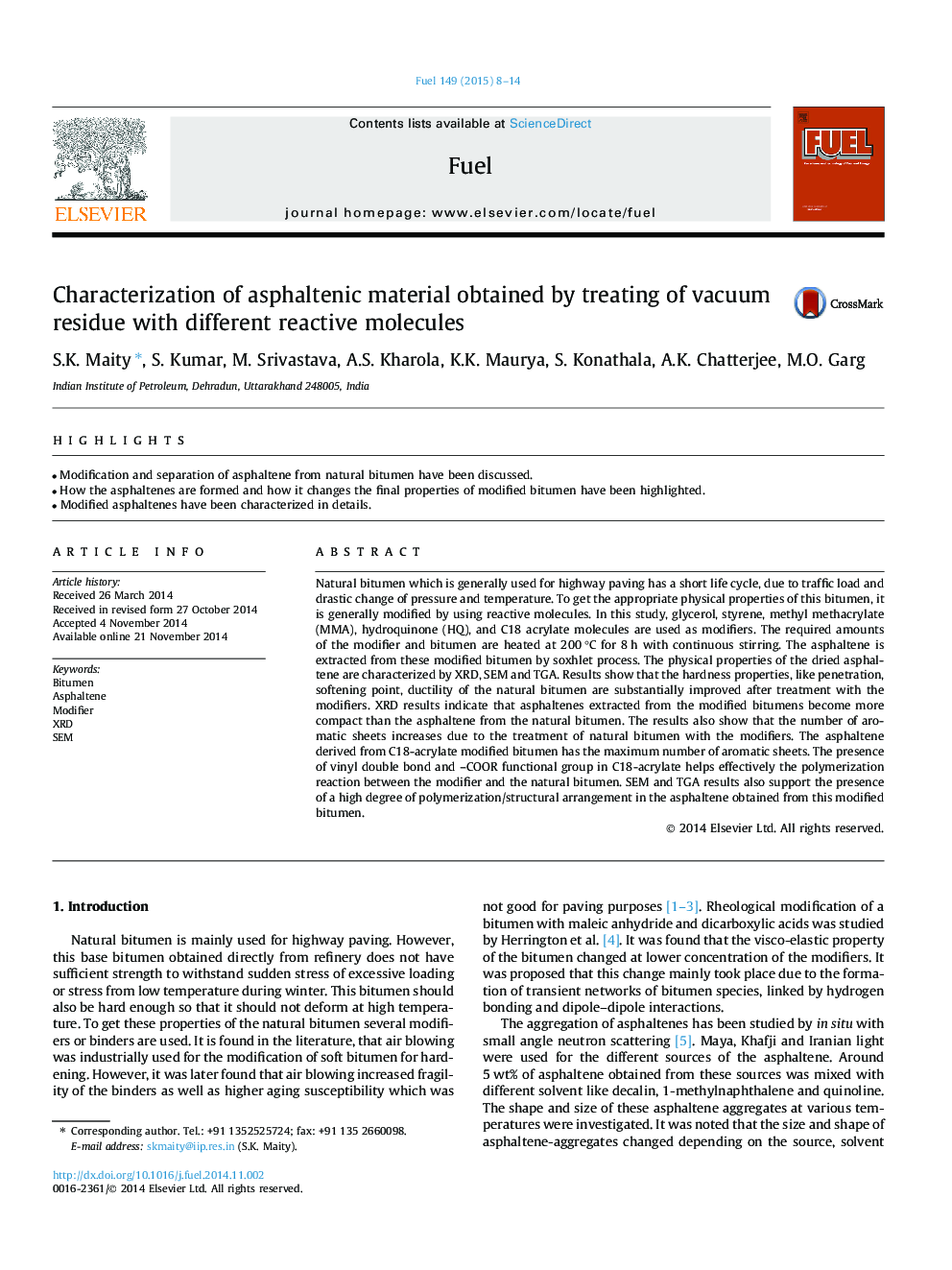| Article ID | Journal | Published Year | Pages | File Type |
|---|---|---|---|---|
| 205766 | Fuel | 2015 | 7 Pages |
•Modification and separation of asphaltene from natural bitumen have been discussed.•How the asphaltenes are formed and how it changes the final properties of modified bitumen have been highlighted.•Modified asphaltenes have been characterized in details.
Natural bitumen which is generally used for highway paving has a short life cycle, due to traffic load and drastic change of pressure and temperature. To get the appropriate physical properties of this bitumen, it is generally modified by using reactive molecules. In this study, glycerol, styrene, methyl methacrylate (MMA), hydroquinone (HQ), and C18 acrylate molecules are used as modifiers. The required amounts of the modifier and bitumen are heated at 200 °C for 8 h with continuous stirring. The asphaltene is extracted from these modified bitumen by soxhlet process. The physical properties of the dried asphaltene are characterized by XRD, SEM and TGA. Results show that the hardness properties, like penetration, softening point, ductility of the natural bitumen are substantially improved after treatment with the modifiers. XRD results indicate that asphaltenes extracted from the modified bitumens become more compact than the asphaltene from the natural bitumen. The results also show that the number of aromatic sheets increases due to the treatment of natural bitumen with the modifiers. The asphaltene derived from C18-acrylate modified bitumen has the maximum number of aromatic sheets. The presence of vinyl double bond and –COOR functional group in C18-acrylate helps effectively the polymerization reaction between the modifier and the natural bitumen. SEM and TGA results also support the presence of a high degree of polymerization/structural arrangement in the asphaltene obtained from this modified bitumen.
